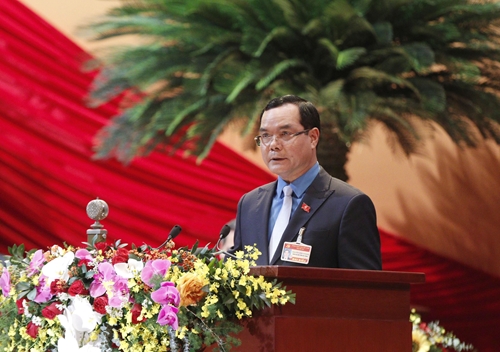Vietnam’s working class, though accounting for about 14 percent of the country’s population and 27 percent of the workforce, produces more than 65 percent of all products and generates more than 70 percent of State budget collections, noted Khang, who is also a member of the Party Central Committee.
    |
 |
|
President of the Vietnam General Confederation of Labour (VGCL) Nguyen Dinh Khang speaks at the ongoing 13th National Party Congress. |
He proposed that the Politburo approve a project to reform the Vietnam Trade Union’s organisation and operation in the new era, thus laying the foundation for the issuance of a resolution in the field.
Khang also suggested the institutionalisation of Party viewpoints and policies regarding trade unions, the working class, and workers, while creating a smooth legal corridor to protect workers and promote the role of trade unions and the working class in national construction and defence.
Meanwhile, Ha Thi Nga, President of the Vietnam Women’s Union, highlighted the significance of ensuring equal access to social welfare for women, especially those working abroad, from rural areas, and pregnant and nursing women.
She pointed to four major issues, including housing support for migrant woman workers, social welfare for nursing women, and employment opportunities for women.
Ha noted that about 80 percent of workers are currently facing difficulties in housing, while only 30 percent of the women in the forking force enjoy a maternity allowance. According to the General Statistics Office, maternal deaths among women from ethnic minority groups were four times higher than that among the majority Kinh women in 2019.
An important force of the country and 50.23 percent of its population, women still face difficulties in accessing social welfare policies and employment opportunities, she noted, adding that about 80 percent of female workers of working age are untrained and bear a heavy burden at home.
Ha proposed that the Party and State include gender factors in policies for sectors, in line with the Law on Gender Equality, thus providing better support to women.
Source: VNA